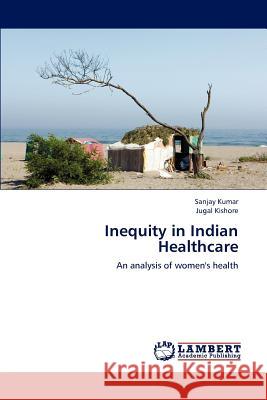Inequity in Indian Healthcare » książka
Inequity in Indian Healthcare
ISBN-13: 9783659191855 / Angielski / Miękka / 2012 / 112 str.
Accessibility of basic healthcare to majority of people is a big challenge in the world, especially in developing countries like India. This is mainly because of ignorance of facts determined in scientific studies by the governments in its planning and programming; high cost of healthcare; unequal distribution of facilities; discriminatory attitude of planners and providers of various programs and schemes. In this whole process people belonged to scheduled castes and scheduled tribes and women are the most sufferers. They continue to have worst nutritional and health indicators. This book provides insight of health situation of women prevailed in India since independence. After globalization health equity is further disturbed. This book also provides analysis how and why women are neglected. Authors have highlighted certain unknown facts such as discrimination faced by marginalized section of society and women when they visit to health facilities; and inequitable distribution of health infrastructure in urban versus rural and south versus northern India.
Accessibility of basic healthcare to majority of people is a big challenge in the world, especially in developing countries like India. This is mainly because of ignorance of facts determined in scientific studies by the governments in its planning and programming; high cost of healthcare; unequal distribution of facilities; discriminatory attitude of planners and providers of various programs and schemes. In this whole process people belonged to scheduled castes and scheduled tribes and women are the most sufferers. They continue to have worst nutritional and health indicators. This book provides insight of health situation of women prevailed in India since independence. After globalization health equity is further disturbed. This book also provides analysis how and why women are neglected. Authors have highlighted certain unknown facts such as discrimination faced by marginalized section of society and women when they visit to health facilities; and inequitable distribution of health infrastructure in urban versus rural and south versus northern India.











